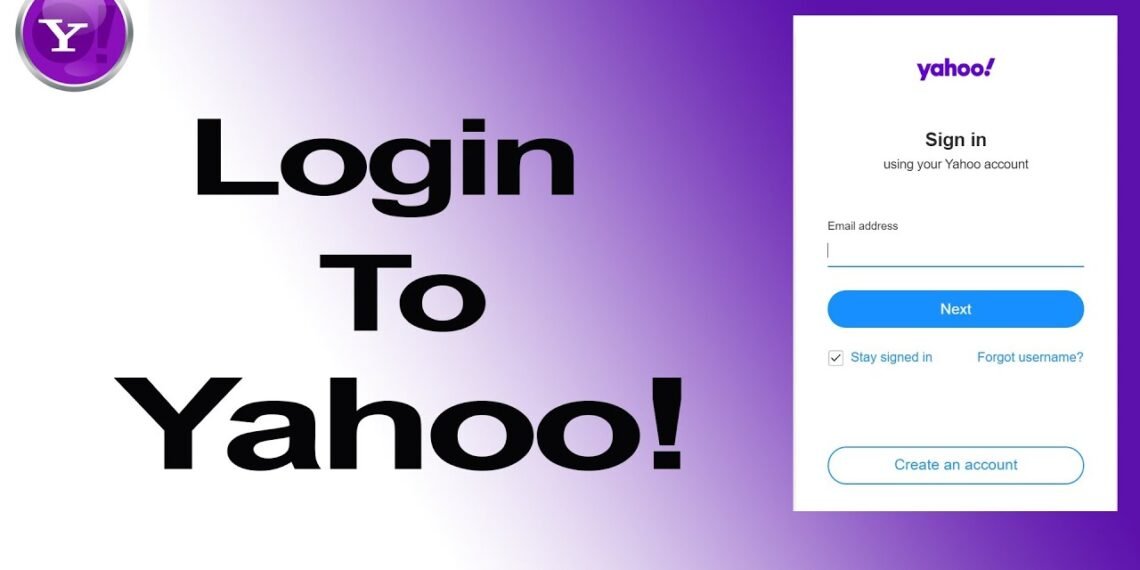Yahoo Mail Sign In Basics
In today’s digital age, email has become an essential means of communication. Yahoo Mail, a popular email service, offers users a reliable and feature-rich platform to stay connected with friends, family, and colleagues. To access the multitude of features and services offered by Yahoo Mail, it is important to understand the basics of Yahoo Mail sign in.
Introduction to Yahoo Mail
Yahoo Mail is an email service provided by Yahoo, a leading internet company. With Yahoo Mail, users can send and receive emails, organize their messages, and access other Yahoo services such as news, finance, and entertainment. Yahoo Mail offers a user-friendly interface, robust spam filtering, and ample storage space, making it a preferred choice for many email users.
Importance of Yahoo Mail Sign In
The Yahoo Mail sign in process is the gateway to your Yahoo Mail account. By signing in to your account, you can access your inbox, compose new emails, view and manage your contacts, and customize your email settings. Yahoo Mail also offers additional features like folders, filters, and search functions to help you stay organized and efficiently manage your emails.
Signing in to your Yahoo Mail account is crucial for several reasons:
-
Access to Emails: Once signed in, you can access your Yahoo Mail inbox and read, reply to, or forward emails. You can also organize your emails into folders, making it easier to find specific messages when needed.
-
Compose and Send Emails: By signing in, you can compose new emails and send them to your contacts. Yahoo Mail offers a rich text editor that allows you to format your emails, add attachments, and personalize your messages.
-
Manage Contacts: Yahoo Mail provides a convenient address book feature that allows you to store and manage your contacts. By signing in, you can add new contacts, edit existing ones, and create contact groups for efficient email distribution.
-
Customize Email Settings: Signing in to your Yahoo Mail account allows you to customize various email settings according to your preferences. You can modify display options, set up filters and rules, enable email forwarding, and configure email signatures.
To sign in to your Yahoo Mail account, you will need your Yahoo Mail username (email address) and password. If you encounter any sign-in issues or forgot your password, refer to our article on Yahoo Mail password reset for assistance.
By understanding the basics of Yahoo Mail sign in, you can make the most of this powerful email service and streamline your communication. Stay connected, organized, and in control with Yahoo Mail.
Accessing Your Yahoo Mail Account
To fully utilize the features and benefits of Yahoo Mail, it’s essential to know how to access your account. In this section, we will provide you with a step-by-step guide to Yahoo Mail sign in and address some common sign-in issues that you may encounter.
Step-by-Step Guide to Yahoo Mail Sign In
Signing in to your Yahoo Mail account is a straightforward process. Follow these simple steps to access your inbox:
- Open your preferred web browser and go to the Yahoo Mail login page.
- You can access the Yahoo Mail login page by visiting yahoo.com and clicking on the “Mail” icon located in the top right corner.
- Enter your Yahoo email address in the provided field.
- Make sure to enter your complete email address, including the “@yahoo.com” domain.
-
Click on the “Next” button.
-
On the next screen, enter your password in the designated field.
- Ensure that you enter your password correctly, taking note of any uppercase or lowercase letters.
- Click on the “Sign In” button.
If you have entered your email address and password correctly, you will be directed to your Yahoo Mail inbox, where you can access your emails, compose new messages, and manage your account settings. For more information on navigating the Yahoo Mail interface, refer to the section on navigating the Yahoo Mail interface.
Troubleshooting Common Sign In Issues
While signing in to Yahoo Mail is usually a smooth process, there may be instances where you encounter issues. Here are some common sign-in issues and their possible solutions:
-
Forgotten Password: If you have forgotten your Yahoo Mail password, you can initiate the password reset process by clicking on the “Forgot password?” link on the sign-in page. Follow the prompts to reset your password and regain access to your account. For more details, refer to our article on Yahoo Mail password reset.
-
Incorrect Email Address: Double-check that you have entered your Yahoo email address correctly. Ensure that there are no typos or misspellings.
-
Account Locked: If you have made multiple unsuccessful sign-in attempts, your Yahoo Mail account may get temporarily locked for security reasons. Wait for a designated period, usually around 12 hours, before attempting to sign in again. If the issue persists, you can contact Yahoo Mail support for further assistance.
-
Browser Compatibility Issues: Ensure that you are using a compatible web browser to access Yahoo Mail. It is recommended to use the latest version of popular browsers such as Google Chrome, Mozilla Firefox, or Safari.
If you continue to experience sign-in issues or encounter any other problems with your Yahoo Mail account, you may find it helpful to visit the Yahoo Mail Help Center or contact Yahoo Mail support directly for personalized assistance.
Now that you have successfully signed in to your Yahoo Mail account, you can explore the various features and settings available to manage your emails effectively.
Managing Your Yahoo Mail Account
Once you have successfully signed in to your Yahoo Mail account, it’s important to familiarize yourself with the various features and settings available to efficiently manage your account. This section will guide you through navigating the Yahoo Mail interface and customizing your account settings.
Navigating the Yahoo Mail Interface
The Yahoo Mail interface is designed to provide a user-friendly experience, allowing you to seamlessly navigate through your inbox, folders, and other important sections. Here are some key components of the Yahoo Mail interface:
-
Inbox: The inbox is where you’ll find all your received emails. It displays the most recent emails at the top, allowing you to easily scroll through and access your messages. To learn more about managing your inbox, check out our article on Yahoo Mail Inbox.
-
Folders: Yahoo Mail allows you to create folders to organize your emails. By categorizing your emails into different folders, you can keep your inbox clutter-free and locate important messages quickly. You can create folders for specific projects, personal emails, or any other categories that suit your needs.
-
Search: The search bar at the top of the Yahoo Mail interface enables you to search for specific emails or contacts. Simply enter relevant keywords, sender names, or subject lines to quickly locate the desired information.
-
Compose: To send a new email, click on the “Compose” button, usually located prominently on the interface. This will open a new window where you can enter the recipient’s email address, subject, and compose your message.
-
Settings: The settings menu, often represented by a gear icon, provides access to various customization options and account settings. By exploring the settings, you can personalize your Yahoo Mail experience according to your preferences. We’ll delve deeper into this in the next section.
Customizing Your Yahoo Mail Settings
Customizing your Yahoo Mail settings allows you to tailor your email experience to suit your specific needs. Here are some key settings you can adjust:
-
Account Information: This section allows you to manage your account details, such as your name, recovery email, and phone number. It’s important to keep this information up to date to ensure the security of your account.
-
Themes and Layout: Yahoo Mail offers a range of themes and layout options to personalize the appearance of your inbox. You can choose from various preset themes or customize the colors and fonts according to your preferences.
-
Filters and Blocked Addresses: By setting up filters, you can automatically sort incoming emails into specific folders or apply other actions based on criteria you define. Additionally, you can block specific email addresses to prevent unwanted messages from reaching your inbox.
-
Signature: The signature feature allows you to create a personalized signature that will automatically be added to the end of your outgoing emails. This is useful for including your contact information, a professional sign-off, or any other information you wish to include.
-
Vacation Response: If you’re going on vacation or will be away from your email for an extended period, you can set up an automatic vacation response to let people know you’re currently unavailable. This feature is helpful for managing expectations and ensuring that important contacts are aware of your absence.
By exploring and customizing your Yahoo Mail settings, you can optimize your email management experience and make the most of the features available. Remember to periodically review and update your settings to ensure they align with your evolving needs. If you encounter any issues with your Yahoo Mail account, consider checking our article on Yahoo Mail Login or reach out to Yahoo Mail support for further assistance.
Security Tips for Yahoo Mail Users
When using Yahoo Mail, it’s important to prioritize the security of your account and practice safe email usage. By following a few simple guidelines, you can help protect your personal information and maintain the privacy of your communications.
Ensuring Account Security
To ensure the security of your Yahoo Mail account, consider implementing the following measures:
-
Strong Password: Choose a strong and unique password for your Yahoo Mail account, one that includes a combination of letters, numbers, and symbols. Avoid using easily guessable information such as your name or birthdate. Regularly update your password and avoid reusing it for other online accounts.
-
Two-Factor Authentication: Enable two-factor authentication for your Yahoo Mail account. This adds an extra layer of security by requiring a verification code, usually sent to your mobile device, in addition to your password for login. This helps prevent unauthorized access even if your password is compromised.
-
Monitor Account Activity: Regularly review your Yahoo Mail account activity to identify any suspicious or unauthorized access. Yahoo provides a feature that allows you to view recent login activity, including the date, time, and location of each login. If you notice any unfamiliar activity, take immediate action by changing your password and contacting Yahoo support if necessary.
-
Beware of Phishing Attempts: Be cautious of phishing attempts, where malicious individuals attempt to trick you into revealing your login credentials or personal information. Avoid clicking on suspicious links or providing sensitive information in response to unsolicited emails or messages. Yahoo will never ask you to provide your password via email.
For more information on how to protect your Yahoo Mail account, refer to our article on yahoo mail password reset.
Best Practices for Safe Email Usage
In addition to account security, practicing safe email usage is essential to protect yourself and your contacts. Consider the following best practices:
-
Be Wary of Attachments and Links: Exercise caution when opening email attachments or clicking on links, especially if they are from unfamiliar or suspicious sources. Malicious links or attachments can contain viruses, malware, or phishing attempts. Scan attachments with antivirus software before opening and verify the source before clicking on any links.
-
Use a Reliable Antivirus Software: Install and regularly update a reputable antivirus software on your device. This helps detect and remove any potential threats that may be present in your email or attachments.
-
Avoid Sharing Personal Information: Be cautious about sharing personal or sensitive information through email, especially if the request seems unusual or unexpected. Legitimate organizations typically do not request sensitive information via email. When in doubt, contact the organization directly through their official website or phone number to verify the request.
By following these security tips and best practices, you can enhance the overall security of your Yahoo Mail account and protect yourself from potential risks. Remember to stay vigilant and keep up-to-date with the latest security practices to ensure a safe and secure email experience.










